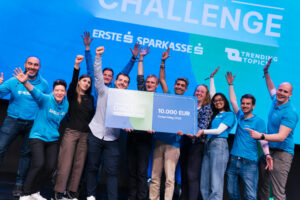What To Think Of When Preparing To Raise Seed And Series A. Practical Advice From Founders And Investors

Stanislav Sirakov is a venture capitalist and a partner at LAUNCHub Ventures – a leading seed and pre-Series A fund in CEE, where he focuses on SaaS and b2b software. He has a background in the financial industry, started a company in 2008 and joined LAUNCHub at the beginning of the first fund in 2012.
During the last several years we have observed some knowledge gaps when it comes to the topic of fundraising, and in particular fundraising Series A or later rounds. This is mainly due to the fact that there aren’t that many Series A funds in our region, and also a small number of companies are able to fundraise in the US or EU. Based on the insights we and our portfolio companies got during the fundraising efforts and the advices from our large network of co-investors, we decided to launch Series A Academy, where we would like to share those insights with the community. In the next months, we would be happy to share what we’ve learned in a series of guest articles in Trending Topics. We would be covering topics like metrics, what do investors expect and how to reach them, round sizes and valuations, preparation for fundraising, and others in more detail in the following posts.
What you need to know when start fundraising
You must have heard a common saying “Fundraising is like sales”, though instead of selling your product you are selling your company. And your company is a combination of a product, a team, customers, financial performance, market dynamics, shareholders and many other factors. So, when you fundraise you need to be able to sell all those composite parts of your company.
One of our portfolio founders who has raised both seed and Series A rounds in San Francisco, summarized it quite well: “Fundraising a Series A is very different from fundraising a seed round, while the second is a ‘numbers game’ – you need to have good intros and meet as many investors as it takes, for Series A you need to start building proper relations with investors to prove them your story is right and that you are an execution machine.’’
(My personal advice: Take time and build proper relations with potential investors independent in what stage you are fundraising.)
(Before) Pre-Seed and Seed
But let’s get back and decompose this statement. When fundraising a seed (or pre-seed) round a company is at a stage that it has discovered a problem on the market. It might be a market that founders are familiar with or a problem that they have experienced themselves, or just grab the opportunity to enter an interesting market. At this stage, it might be just an idea (pre-seed) or a product with some early customers (typical seed), but the company is missing a repeatable approach for targeting customers (pre-product market fit). Investors’ decisions are predominantly based on the evaluation of the team and most importantly believing in their vision about the market and how it will develop in the future. Sometimes they might require to see some ‘customer love’, not necessarily proving the financial or revenue generation model, but the fact that there is a need on the market. Good intros are critical as they are de-risking part of due diligence on the team.
Series A
During the Series A stage in most cases the company has already launched a product, have customers/users that are growing exponentially and some build processes around user acquisition, sales, product roadmap, etc. (these processes will be rebuilt many times). So, what you need is to present and to prove a story. Though the story at this stage is much more complicated, it consists of many other parts in addition to the previously mentioned: more info about the team (not just the founding team, but also early hires); the metrics (depending on the type of business it might be user acquisition and engagement, sales, retention, etc.); the moat on the market and how you fight and win over competitors; the product vision, etc. All these have to be aligned showing why you are going to win the market and that you could build a company, which is sizable enough for the fund that invests in it. Usually, different funds are interested in different outcomes, depending on the fund size, the ambition of the managers, i.e. for a $50-100M fund exits of $100-300M might be very good, though these are not that material for a fund of $1B.
What to think about first
The fundraising process is usually split into three phases – preparation, actual fundraising, and closing. In each phase, there are tips that can be handy, based on questions and challenges of our founders.
Time & planning: In our experience, it takes at least 6 months, though you might be lucky and do it in 2-3 months (guess what everyone is thinking ). A typical attitude that we have seen is to severely underestimate the time it takes to fundraise and the dedication needed by the founding CEO – however it always goes back to those 6+ months of an almost full-time job.
The main person whose job is exclusively related to fundraising is the founding CEO – at the early stage, this is the only person who is well suited to tell the story and translate the vision to potential investors. Though you might need help from other people (existing investors, advisers, other founders, even customers sometimes), this help is mostly related for intros to potential investors and feedback on the potential terms and negotiation position during the closing phase.
Valuation and round size: Other topics that are interesting to many founders are the round size and the valuation of the company, which usually are very related. They are determined by many factors such as the metrics of the company, the market attractiveness, the location of the company and the investors, but mostly by the FOMO (fear of missing out from the investors). Fundraising market, as every market is driven by the main market forces – supply and demand. The more demand you have for a company (i.e. more investors interested in it), the better the price (valuation) of the company.
As one of our co-investors in London put it out, “most of the industry (VC industry) chases momentum and momentum could mean you are at the right market at the right time and the space is really hot, another way to show that you have momentum is that you are generating a ton of revenue ($150-250k a month) and you are scaling really fast (>20% MoM), and the last way is to be perceived as a company in which every investor is looking seriously to invest and create scarcity, which could be socially engineered”. These factors could explain big deviations in round sizes – usually in different geographies or with a different history.
The fundraising period is not the most pleasant time, it is a tense period, where founders are having numerous meetings with investors and very often hear many ‘no-s’, but it is an indispensable part of the company building. As they say, “the only two jobs of a CEO is to take care of the team, and the company continuity”, which in the early stage is very much related to fundraising. And by doing it you are not only providing financial means to your business, but also are setting up the trajectory of further development.
As one of our portfolio founders who recently fundraised Series A in San Francisco put it very well “it is tense, but also a great learning period, you have all these super bright guys giving you feedback about your business and your industry, it is like hiring a top consultant for free”.
______
In the next months, we’ll go deeper and explore in detail topics like preparing an investor list, finding the right intro to the right investors, metrics for fundraising series A, valuation, creating a momentum while fundraising, how to evaluate investors, common mistakes founder make, how investors think and what they expect.





























